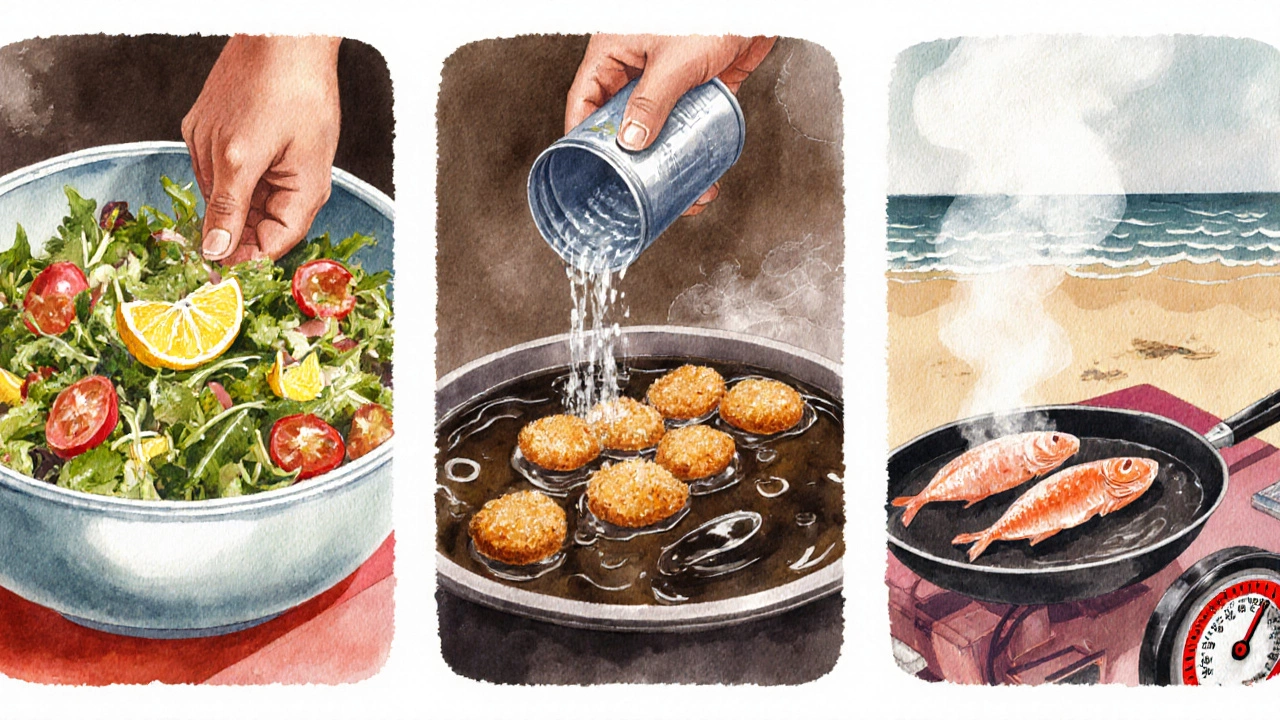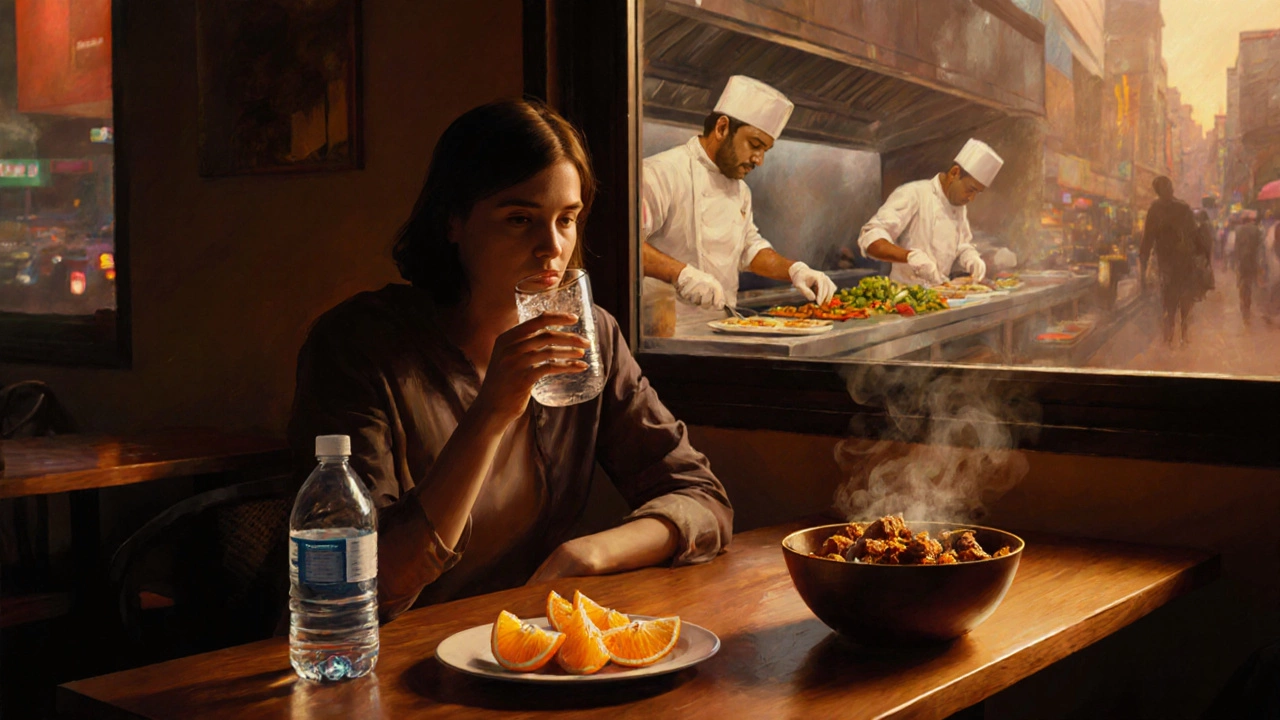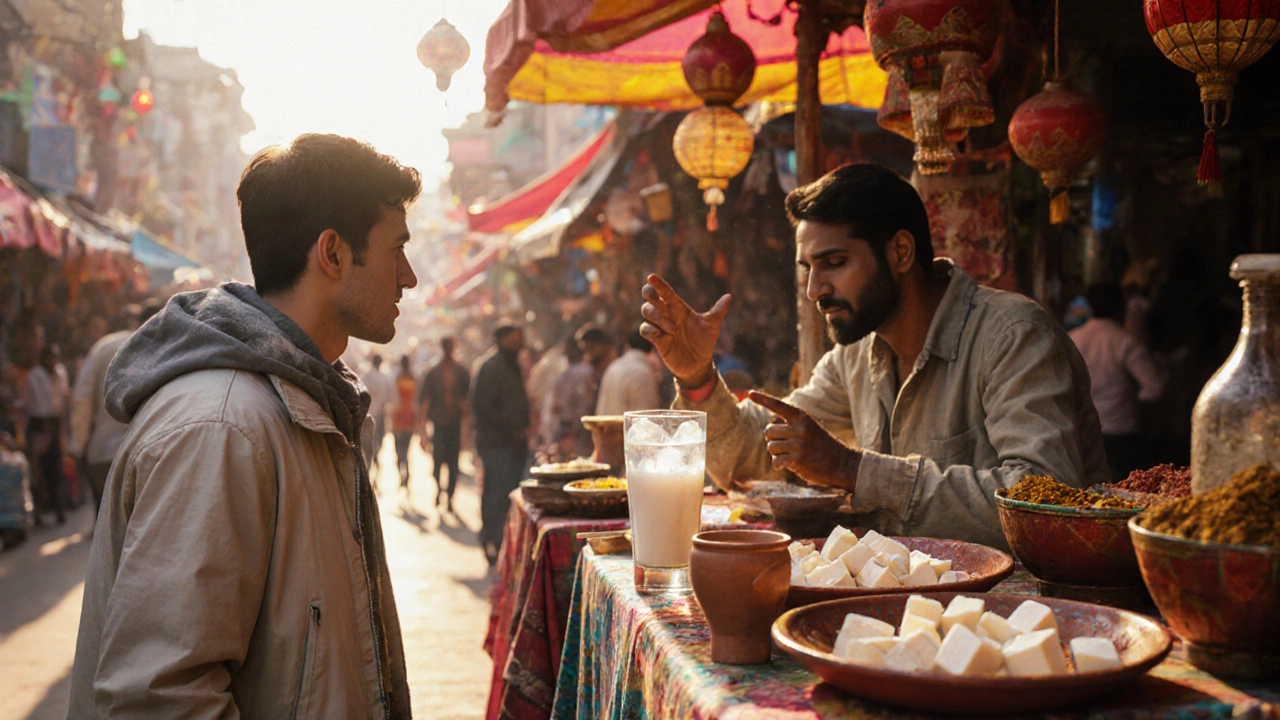Food Safety Guide for India
Check Your Food Safety
Select a food type from the list below to see if it's safe to consume in India based on the article recommendations.
When you land in India, the aromas and colors can make you want to try everything on the menu. Unsafe foods for travelers in India are dishes or ingredients that commonly cause food‑borne illness among visitors due to poor handling, questionable water sources, or insufficient cooking. Knowing which items carry the highest risk saves you from a ruined trip, missed sightseeing, and costly doctor visits. Below you’ll find the most common pitfalls, why they’re risky, and practical swaps that let you enjoy authentic flavors without the fallout.
Key Takeaways
- Avoid tap water, ice, and any drinks made with untreated water.
- Skip raw or unpasteurized dairy products, including street‑sold lassi and paneer.
- Be cautious with fresh‑cut salads, fruit sold without a peel, and any garnish that’s been sitting out.
- Limit fried street snacks that sit in open oil vats for long periods.
- Choose cooked seafood from reputable establishments and always ask if it’s been properly boiled.
- Follow simple hygiene habits - wash hands, use bottled water for brushing, and eat hot food.
Why food safety in India deserves extra attention
India’s climate is hot and humid, which makes bacterial growth fast if food isn’t stored or cooked correctly. Moreover, the sheer variety of regional cuisines means you’ll encounter unfamiliar preparation methods. Travelers often fall into three traps: trusting the appearance of food, assuming “spicy = safe,” and overlooking the source of water. Understanding the underlying risks helps you make smarter choices on the fly.
1. Tap Water & Ice
Tap water is untreated municipal water that can contain bacteria like E.coli, parasites such as Giardia, and chemical contaminants. Even if it looks clear, it’s rarely safe for direct consumption. Ice cubes are made from the same water source, so they inherit the same dangers.
Best practice: always drink sealed, factory‑bottled water and use it for brushing teeth. If you need ice, ask the server to confirm it’s made from bottled water, or simply skip it.
2. Raw or Unpasteurized Dairy
Raw milk and unpasteurized dairy products (including traditional lassi, fresh paneer, and homemade ghee) are popular street treats. Without pasteurisation, they can harbor Salmonella, Listeria, and Campylobacter.
Choose dairy that’s clearly marked as pasteurised, or opt for shelf‑stable options like UHT milk, powdered milk, or commercially packaged cheese. Packaged yogurt with a seal is generally safe.

3. Street Salads & Fresh Fruit
Street salads often consist of chopped cucumber, tomato, onion, and coriander tossed with lemon juice and spices. The vegetables are washed in the same water used for cleaning utensils, and the lemon juice may be added after the salad sits for hours.
Whole fruits that you can peel (like bananas, oranges, and pomegranates) are low‑risk because the skin protects the edible part. If you crave sliced fruit, ask for it to be prepared in front of you using bottled water and fresh knives.
4. Fried Snacks Served in Open Oil
Popular items such as pani puri and bhajji are fried in oil that’s reused for hours or even days. Old oil can develop harmful compounds and may be contaminated by food particles.
Look for stalls that change oil frequently (a good sign is a fresh, clean smell) or choose baked or grilled alternatives like tandoori kebabs.
5. Seafood from Coastal Stalls
Seafood sold on beaches or market stalls is often cooked quickly over high heat, but sometimes it’s only warmed or served raw. Improperly cooked fish and shellfish can contain Vibrio, norovirus, or histamine toxins.
Stick to well‑known restaurants that have a reputation for sourcing fresh fish and always ask if the seafood is cooked thoroughly (minimum internal temperature of 63°C/145°F).
6. Uncooked Eggs & Meat
Dishes like egg bhurji (scrambled eggs) or keema (minced meat) can be undercooked, especially when served at street carts that rush orders. Undercooked eggs may carry Salmonella; raw meat can hide E.coli.
Request that eggs be cooked until the yolk is firm and ask for meat to be well‑done. When in doubt, choose vegetarian options that are less likely to be undercooked.

7. Packaged Snacks & Sweets
Even sealed snacks can be compromised if they’re stored in humid conditions. Look for packages that are intact, free from punctures, and have a clear expiry date. Avoid bulk sweets sold in open containers.
Trusted brands that use vacuum sealing are safer - they’re less likely to have been exposed to insects or moisture.
Quick Reference: Risky Foods vs Safer Choices
| Food / Drink | Typical risk | Safer alternative |
|---|---|---|
| Tap water & ice | Bacteria, parasites | Bottled sealed water |
| Raw milk & unpasteurised cheese | Salmonella, Listeria | Pasteurised dairy or UHT milk |
| Street salads & pre‑cut fruit | Cross‑contamination | Whole peeled fruit, make‑your‑own salad |
| Fried snacks in old oil | Oil degradation, bacterial growth | Freshly fried items or baked alternatives |
| Seafood from stalls | Vibrio, norovirus | Cooked fish from reputable restaurants |
| Undercooked eggs/meat | Salmonella, E.coli | Fully cooked eggs, well‑done meat |
| Open‑container sweets | Contamination, spoilage | Sealed, branded sweets |
Practical Tips for Eating Safely
- Carry a small bottle of hand sanitizer and clean your hands before meals.
- Eat hot meals right after they’re cooked; re‑heating reduces bacterial load.
- Prefer establishments that display a high turnover of food - a busy place usually means fresher ingredients.
- When ordering street food, watch the vendor’s hygiene: clean workspace, fresh gloves, and a separate cooking area.
- Keep a basic travel health kit with oral rehydration salts in case of mild stomach upset.
Next Steps If You Feel Unwell
If you develop symptoms like vomiting, diarrhea, or fever within 24-48hours after a meal, stay hydrated with bottled water and consider over‑the‑counter anti‑diarrheal medication. If symptoms persist beyond 48hours, seek medical attention-many Indian hospitals have English‑speaking staff and can quickly run tests for common pathogens.
Frequently Asked Questions
Is it safe to drink coconut water from a street vendor?
Only if the vendor uses a new, sealed coconut and cuts it open in front of you with a clean knife. Otherwise, stick to bottled coconut water.
Can I eat spicy food without getting sick?
Spiciness itself isn’t a health risk. The danger lies in how the food was prepared. If the dish is cooked thoroughly and served hot, the heat level doesn’t matter.
What about dairy‑based sweets like rasgulla?
Commercially packaged rasgulla from reputable brands is usually pasteurised and safe. Avoid homemade versions sold at open stalls unless you’re sure about the milk source.
Are vegetarian street foods safer?
Vegetarian dishes eliminate the risk of undercooked meat, but they can still contain contaminated water or raw veg. Apply the same hygiene checks as you would for any street food.
How long can I keep bottled water unopened?
Unopened bottled water remains safe for at least a year if stored away from direct sunlight and extreme heat.
